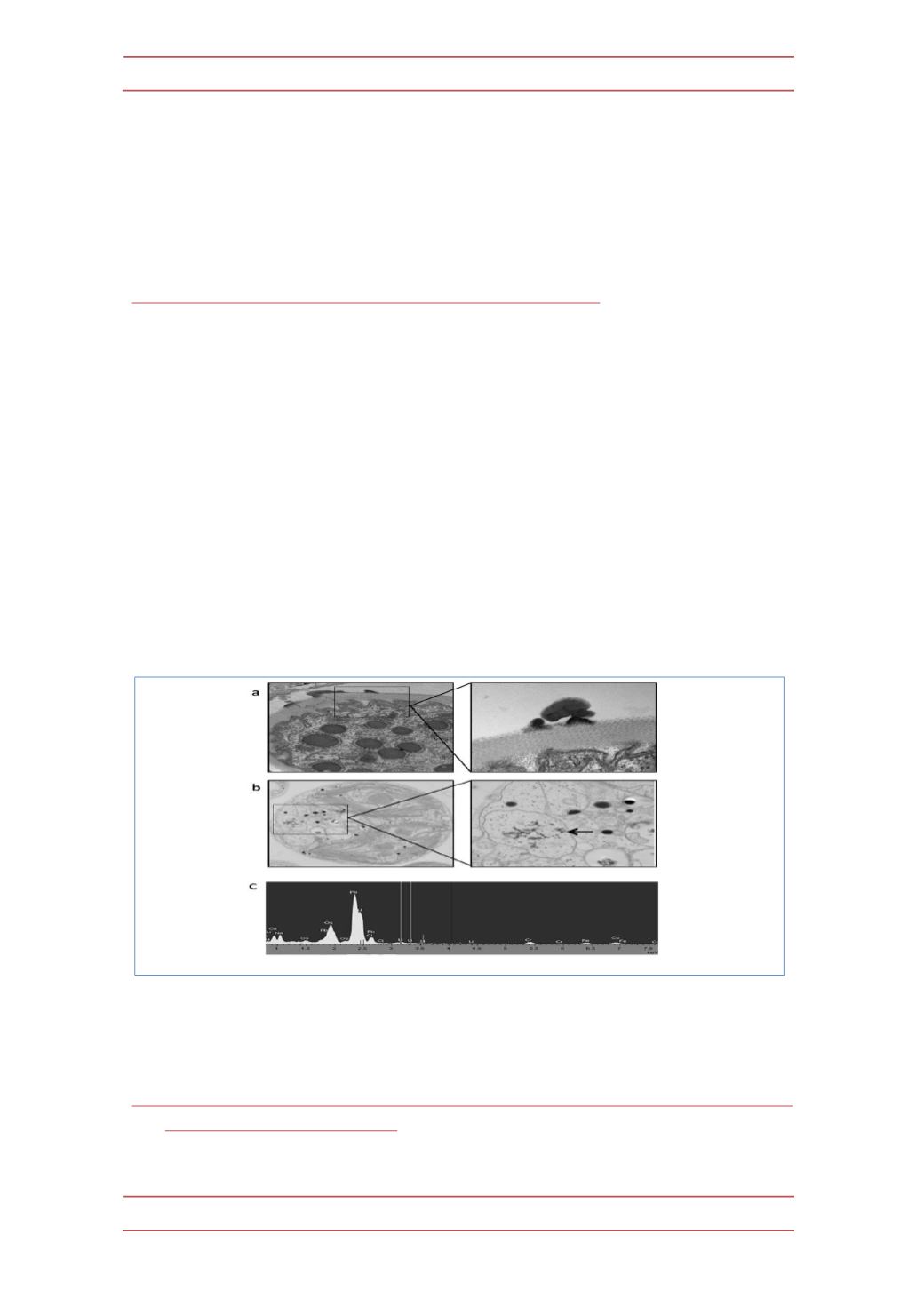
Microalgae: the first nuclear engineers?
641
the past 10 years we have shown that a single mutation of large effect, which occur
previously to selective agent exposure and are maintained in microalgae
populations as mutation-‐selection balance allow adaptation of microalgae to
pesticides (18, 23-‐25), xenobiotics (26), algaecides (27-‐28), mine spills (29-‐31)
volcanic effluents and thermal waters (32-‐33).
4. MICROALGAE ARE ABLE TO CONCENTRATE URANIUM
Once it is found that microalgae can survive in an environment with large
amounts of Uranium the next step for become able to build a natural nuclear
reactor is that microalgae can to concentrate uranium. However, it not seems easy
that microalgae could concentrate uranium because U has not knowledge
biological utility. Consequently, we look for the possibility of uranium intracellular
and extracellular sequestration in the
Chlamydomonas
cells collected from the
Saelices evaporation pond (containing 25 mg l
-‐1
of uranium).
An Inductively Coupled Plasma-‐Mass Spectrometry (ICP-‐MS VARIAN
RedTop) analysis demonstrated that
Chlamydomonas
cells bind a considerable
total uranium quantity as 115 mg U g
-‐1
of dried biomass. Additionally, ICP-‐MS and
EDX microanalysis confirmed the participation of two different mechanisms in the
uranium removal: bio-‐adsorption to the cell wall (and bioaccumulation within the
cell (Figure 4).
Figure 4.-‐
TEM imagines, a) bio-‐adsorption in the cells wall, b) bio-‐accumulation of U inside the
cells and c) TEM-‐XEDS analysis, in
Chlamydomonas sp.
Arrow detail in inlet showing uranium
precipitates.
5. MICROALGAE ARE ABLE TO ENRICH URANIUM (PRODUCING ISOTOPIC
FRACTIONATION
235
U/
238
U).
In all probability the hardest challenge to meet is that microalgae could get
isotopic fractionation of uranium. However, after decades of study of stable


